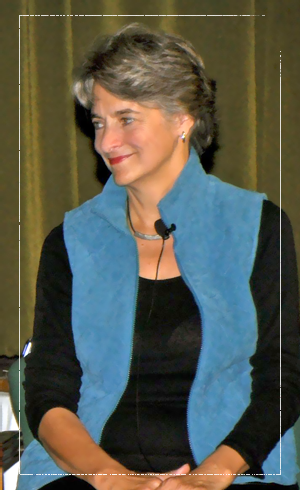(this post is by my friend and colleague Terry Saracino who has written deeply on the beauty of the Narrative Tradition)
May 8, 1989 Santa Fe, New Mexico I found myself sitting in a circle with 25 others from around the country in a beautiful room with windows all around for a week-long course on the Enneagram. This would be the first time I met Helen Palmer and her teaching assistants — representatives of the nine types. The Enneagram had caught my heart a few months earlier in Denver when my first teacher had animatedly described the types in vivid detail for a full weekend. But, as this week unfolded and I watched Helen interview the types, I knew with certainty that this was how I wanted to teach the Enneagram.
Why was it so powerful back then and still is today? How do we as teachers and students of the Narrative Tradition articulate this to others? As we grow into our new nonprofit structure and redesign our website, we are asking the questions “Who are we?” “How are we different from other Enneagram schools?” The simple answer is the Narrative Tradition.
Oral transmission of information and wisdom is as old as human civilization. A few years ago I came upon a useful description of “orality” in a dissertation on the Jamaican Rastafari by Dr. Jeanne Christensen, a friend and colleague of mine who is a professor at the University of Colorado. She writes:
“Orality”¦is immediate, because sound cannot be paused. It disappears as soon as it is uttered. It is active”¦dynamic”¦a total expression. Reading is an isolated individualistic expression. The oral tradition, on the other hand, commands not only the storyteller, but the audience to complete the community. Orality is a process, movement, experience rather than an imperious permanence.”
Dr. Christensen’s description of orality resonates with me and holds several keys to understanding the power of the Narrative. It is a process, not a technique. It is dynamic, always changing. And it involves a community, a “field” created between the person whose story is being told and the listening audience. In a word, it is alive.
The Narrative Tradition, based on interviewing and interacting, is a process and invites us into a relationship with our inner territory. We use the content of the Enneagram and make an experience of it. When we describe our patterns on panels using our capacity for self-observation, we began to see them differently. We get some distance from them. Underlying motivations become clearer. Something clicks. Our patterns begin to loosen. As we try to make ourselves clear to the audience, we gain more insight. Insight is an essential first step toward change. Working with the insights we glean on panels helps us make the necessary changes that grow our souls. تصفيات اليورو 2024
Kinship among panelists develops from mutual sharing and recognition. It is an enormous relief to be in the company of people who understand us because their stories are so similar to ours. Their openness, insight and self-acceptance give us courage to accept our weaknesses and embrace our strengths. We learn how others work with the same behavior patterns, and that supports us. When I thank people who come from the community for taking the time to share their stories on panels, they almost invariably say to me, “I learned so much. spin palace casino Thank you for asking me to come!”
A compassionate audience is also an important part of the Narrative method. We use the practice of following the breath “in and down” so as to be as present as possible to the panelists in all centers – grounded, open hearted, and open minded. The audience receives what is shared and is impacted by it. They may react to what is shared either positively or negatively, but their response teaches them.
All of us have had the experience of suddenly understanding hidden motivations: “That’s why they act like that, not just to get under my skin! It’s how they see the world.” I remember listening to a Five panel years ago. In a difficult relationship with a Five at the time, I shed tears of understanding as the panelists demonstrated their difficulty coming forward and connecting. Phrases such as: “I had to withdraw. I was afraid that they were going to steal my soul” were spoken. This understanding helped me depersonalize my reaction. My relationship was no longer so painful to me. When we see the reasons why others act the way they do, our hearts open and we can never see the person or the type in the same way again. The first line in my notes from that workshop in Santa Fe is “Improves human relationships almost immediately.” So true.
Being part of a narrative audience builds compassionate presence. By listening to others in a compassionate way, we begin to open ourselves. Remember a time from one of your trainings when the room got quiet, you could feel a palpable presence in the room, and something shifted. In that movement we extend beyond our limited awareness ”“ not just cognitively, but also emotionally and somatically ”“ to obtain (for a moment, at least) a glimpse of the greater reality of existence. “Transforming lives, creating a more compassionate world,” the tag line of our organization, is not just words, but truly what happens in our work.
The methodology of the Narrative Tradition grounds the Enneagram in the experiences of thousands of individuals and validates the objective reality of the map. Helen’s first book outlined the key themes that emerged after years of interviews with panelists. We continue to use the experiences of panelists to validate the map and deepen and enrich its lessons.
The “field” created in teaching this way offers a different experience from reading. The Enneagram becomes three-dimensional, embodied in the form of a particular person and story. You hear the words as well as get a sense of the nonverbals of type. While we are each unique representatives of type with our own personal story, the energetic blueprints of type become evident as we observe. In a closing circle in the Enneagram Intensive a few years ago, a participant shared: “The Enneagram has turned from an idea into real people. Now, it’s a real, living, breathing model for me.”
Ultimately, we are all each other’s teachers. David Daniels speaks about the Narrative method as being a democratic process. It is not a hierarchical system. We get away from the mode of “I’m the teacher; you’re the student. I know and you don’t.” We are always learning and benefiting from the wisdom of each other. Self-discovery is key.
The Enneagram is not “an imperious permanence” but a dynamic map, and the stories of thoughtful, articulate and self-aware individuals are among the most fertile sources of its growth over time. It is through these sacred stories we share with each other that our souls grow and we develop more compassion for others. باي بلاي Through this method, our minds gain insight and understanding, our hearts are touched, and our bodies experience the energies of the types. I knew then as I know now, more than ever, that the Narrative Tradition is how I want to teach the Enneagram.
Note: I would like to thank Carole Whittaker for our conversation in October 2010, which planted the seeds for some of these reflections.
![]()
 Terry Saracino, MA, MBA has been teaching the Enneagram as a tool for personal, professional, and spiritual growth since 1989. The Enneagram is her life-long passion. She is currently the president of the nonprofit Enneagram Studies in the Narrative Tradition (ESNT) and on the faculty of the Enneagram Professional Training Program. For more information, visit Enneagram Worldwide or email Terry with any questions or thoughts you may have..
Terry Saracino, MA, MBA has been teaching the Enneagram as a tool for personal, professional, and spiritual growth since 1989. The Enneagram is her life-long passion. She is currently the president of the nonprofit Enneagram Studies in the Narrative Tradition (ESNT) and on the faculty of the Enneagram Professional Training Program. For more information, visit Enneagram Worldwide or email Terry with any questions or thoughts you may have..
![]()

